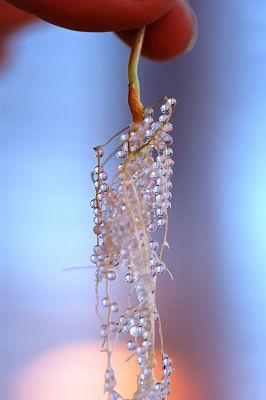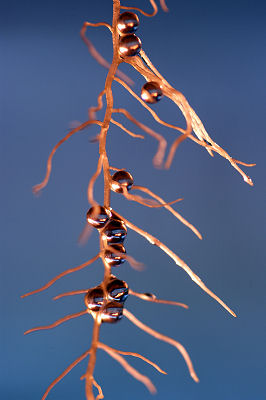|
Strona archiwalna!
Ta strona zawiera treści archiwalne, które nie były zmieniane po 23 września 2019 r. Jeśli chcesz wiedzieć więcej zapoznaj się z deklaracją dostępności
|
||||||
archiwum
 2006 2006
 2008 2008
 2010 2010
 2012 2012
 2014 2014 |
||||||

| ||||||
 |
 |
|||||

|
||||||
| strona główna założenia regulamin kalendarium wskazówki pobierz jury rejestracja zgłoszone projekty galeria gallery | archiwum kontakt | |||||
Description popularizing the research project The most beautiful varieties of rose display marvellous colours. The most valuable tulips boast their sophistication and precisely cut petals. Clematis, Orchis, even chrysanthemums, or innumerable species of lilies do enchant when seen for the first time and any time after. Selected varieties of plants must be beautiful and complex biotechnological steps are undertaken to achieve it. Scientists and consumers also pay attention to the varieties of plants responsible for feeding human population with their ripe, big, juicy, symmetrical and firm fruits, ears of grains, cobs, or stems. Their advantages also can be assessed at first sight. Abstract The project implemented at the Department of Genetics, University of Silesia, is a part of an international research program, Coordinated Research Project Enhancing the Efficiency of Mutagenesis through an Integrated Biotechnology Pipeline, coordinated by the International Atomic Energy Agency (IAEA) in Vienna. The purpose of the project "Biotechnology package for enhancing induced mutagenesis in barley" aims at developing an integrated package of methods for obtaining and characterization of barley lines carrying mutations in genes associated with the development of the root system. One of the main features of regular development of plants under stress conditions is the proper development of root system, which ensures the accurate absorption of water and minerals. Selection methods in traditional plant breeding, due to the technical constraints, are based mostly on the characteristics of shoot development. A full analysis of the phenotype of root and shoot of the analyzed forms allows precise identification of the effects of mutations on morphogenesis of the plant. This has a great convenience in the selection of the preferred agronomic traits, by taking into account the role of the root in shaping the phenotype of the plant. One of the project tasks aims at developing a system for phenotypic analysis of the plant root system architecture, enabling an automatic supply of plants with the medium. The developed system enables an efficient, accurate and a highly repeatable analysis of the morphological features of the root system of cereals, allowing a comparison of their phenotype in the tested mutants and parental varieties. The regulation of cereal root morphogenesis is a complex, multistep process. Its comprehensive understanding is an important subject of basic research. In addition the project has practical importance related to the potential identification of new alleles of genes of high significance in plant breeding. \ |
|
|||||














